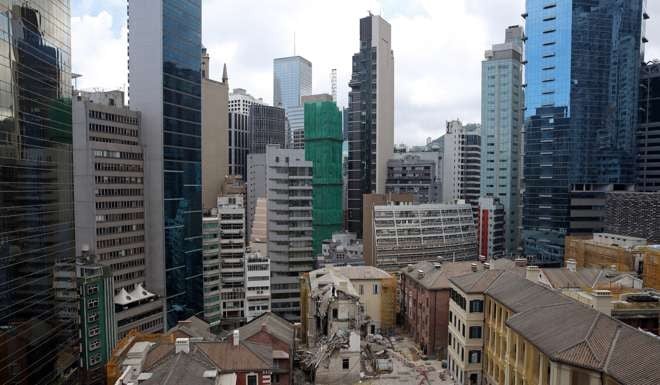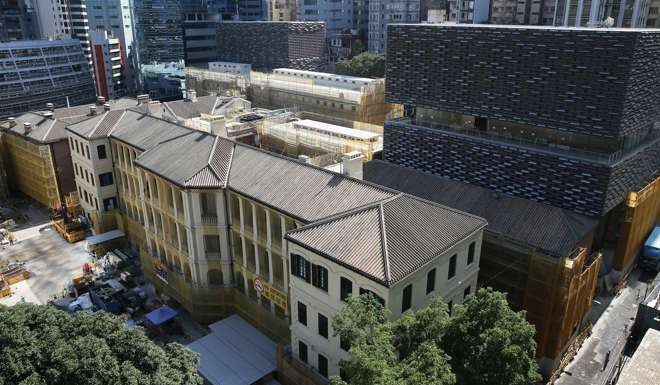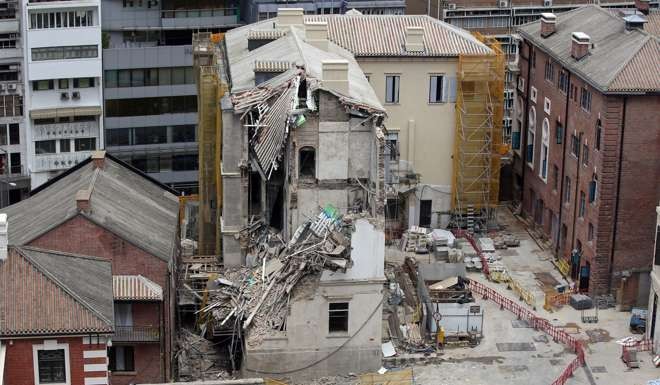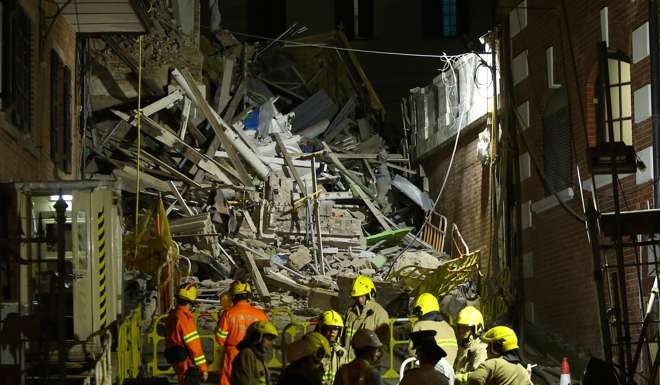
Holes blamed in historic Hong Kong police station wall collapse
Independent review panel also cites support structure settlement and weak localised masonry as case goes to government to establish who was liable

The collapse of a section of the historic married inspectors’ quarters at the Central Police Station compound in May this year could have been avoided if certain holes in a building wall had not been made, an investigation has found.
However, the study conducted by a Jockey Club-appointed independent review panel did not mention who should be held accountable. The club is responsible for the project.

Greg Wong, the panel’s chairman and a former president of the Hong Kong Institution of Engineers, said the study determined “the cutting of holes in the north wall on the first floor was the cause of the collapse”.
The cutting of holes in the north wall ... was the cause of the collapse
Wong, also a structural engineer, said the panel was charged with ascertaining possible causes, not establishing liability. “The Buildings Department is carrying out a much more detailed investigation and as the statutory body they will look into the issue of liability,” he said.
According to the study released on Thursday, the three most likely causes for the collapse of a section of the historic building on Hollywood Road were the settlement of the west corbel, the excavation of holes in the north wall, and the combined effect of weak localised masonry and the cutting of holes in the brick columns.
The panel identified two measures that should have been adopted to prevent the incident, Wong said. “First, avoid making the holes in the columns. What we suggest is ... you make the pockets elsewhere, but not in the column,” he said. “Even if you have a weak spot, the column is fine. It has been supporting the building for 150 years.”

Second, the panel suggested that the shoring and propping of the arches should have been installed prior to cutting any holes into critical loading areas, including brick columns.
Wong demurred when asked whether workers and builders should have been more careful. “They did carry out a structural survey and they mapped all the cracks and then they repaired [them],” he said. “But, as I pointed out, they also had limitations ... Because it’s a balance.”
He said they had to weigh stripping things out to see what they were working on against preserving “the historical fabric”. The accident sparked doubts about the government’s monitoring of revitalisation works. But even before the collapse, the HK$1.8 billion revitalisation project had faced harsh criticism.

The club submitted a proposal in 2007 to revitalise the compound, yet works only started in 2011. The government-helmed conservation project was due to be finished by the end of this year. But on Thursday the club’s executive director of corporate affairs Kim Mak declined to state either its current deadline or whether its budget would be revised.
The compound was declared a monument in 1995 and comprises three structures: the former Central Police Station, built in 1864; the former Central Magistracy; and Victoria Prison. The space is expected to be used for art, commercial and entertainment purposes.

Southern district councillor Paul Zimmerman said “the government should set up a group of different stakeholders to recommend a solution on how to take the project forward”.
The Central and Western District Council plans to discuss the issue on Friday next week.